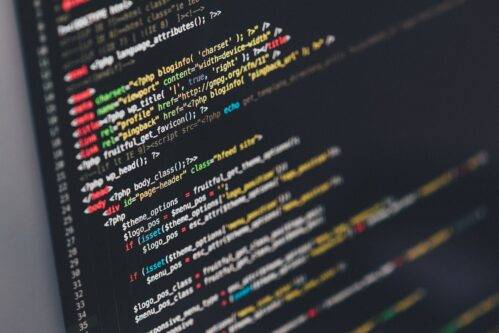
Businesses need to be alert to some of the top AI and data science trends to survive in the tech market
AI and Data science is ruling the world with its data-centric functionalities and understanding of the target customers. Businesses need to be alert to some of the top AI and data science trends to survive in the global tech market. We give you a comprehensive view of global AI and Data science trends so you can follow the latest developments in the industry. For example, AI for IT operations (AIOps), Data-Centric AI, Natural Language Processing (NLP), and Robotic Process Automation are some of the promising technologies.
Data-Centric AI
Data-centric AI represents a shift from a model and code-centric approach to being more data-focused to build better AI systems. Solutions such as AI-specific data management, synthetic data, and data labeling technologies aim to solve many data challenges, including accessibility, volume, privacy, security, complexity, and scope.
Natural Language Processing
NLP constantly expands due to the need for computers to better comprehend human languages. Startups provide NLP-based systems that identify words, phrases, and speech segments. They are employed by businesses to enhance consumer interaction and carry out extensive research.
Auto-ML
Automated machine learning (AutoML) platforms are gaining popularity and taking over various aspects of the data science lifecycle. These platforms automate tasks such as data sourcing, feature engineering, conducting machine learning experiments, evaluating and choosing the most effective models, and deploying them into production environments.
Learning Platforms
Here there are two components to consider. First, Machine Learning Platforms will remain important as the quantity and variety of business data increase. MLPs’ link with intelligent algorithms, application programming interfaces, and massive data sets helps them to offer valuable business insights and innovative solutions.
Edge AI
Edge AI is data processing at the point of creation at the edge, near IoT endpoints, rather than in centralized servers or clouds. This enables real-time insights, pattern detection, and data privacy. Edge AI also improves AI model development, orchestration, integration, and deployment. Gartner predicts that more than 55% of all data analysis by deep neural networks will occur at the point of capture in an edge system by 2025, up from less than 10% in 2021.
Robotic Process Automation
As a cutting-edge software technology to build, deploy and manage robots to emulate (or mimic) humans’ actions interacting with digital systems and software, it will be growing in power soon. With its ability to carry out large volumes of error-free tasks at high volume and speed, it will be adopted with increasing vigor by industries and business houses looking for precision and efficiency.
AI-as-a-service
Known by its acronym AlaaS it is a third-party entity offering advanced AI functionalities based on a one-time subscription fee. It is going to be favored particularly by small and medium business firms. AIaaS is helping firms leverage AI power in-house through off-the-shelf software in crucial areas such as customer service, data analysis, and automating production.
Quantum Artificial Intelligence
It is crucial to analyze vast amounts of information quickly and properly in a world of quick changes and judgments. The advancement of difficult task optimization and solution by quantum AI enhances commercial operations. High-performance AI is made possible by the immense processing capacity provided by quantum computers.
AIOps
IT operations and other teams can improve their most crucial procedures, judgments, and actions using AIOps solutions and improved data analysis of the enormous volumes of incoming information. To encourage cross-team collaboration, Forrester advised IT leaders to look for AIOps vendors who integrated the IT operations management toolchain, provided end-to-end digital experiences, and correlated data.
Predictive Analytics
As per the IBM definition, it is a branch of advanced analytics that predicts future outcomes using historical data combined with statistical modeling, data mining techniques, and machine learning. It will grow as firms must adopt it amidst data surges to identify risks and opportunities in various fields such as weather, healthcare, or scientific research and go for appropriate solutions.
- SEO Powered Content & PR Distribution. Get Amplified Today.
- PlatoData.Network Vertical Generative Ai. Empower Yourself. Access Here.
- PlatoAiStream. Web3 Intelligence. Knowledge Amplified. Access Here.
- PlatoESG. Automotive / EVs, Carbon, CleanTech, Energy, Environment, Solar, Waste Management. Access Here.
- PlatoHealth. Biotech and Clinical Trials Intelligence. Access Here.
- ChartPrime. Elevate your Trading Game with ChartPrime. Access Here.
- BlockOffsets. Modernizing Environmental Offset Ownership. Access Here.
- Source: https://www.fintechnews.org/top-trends-impacting-the-future-of-ai-and-data-science/



